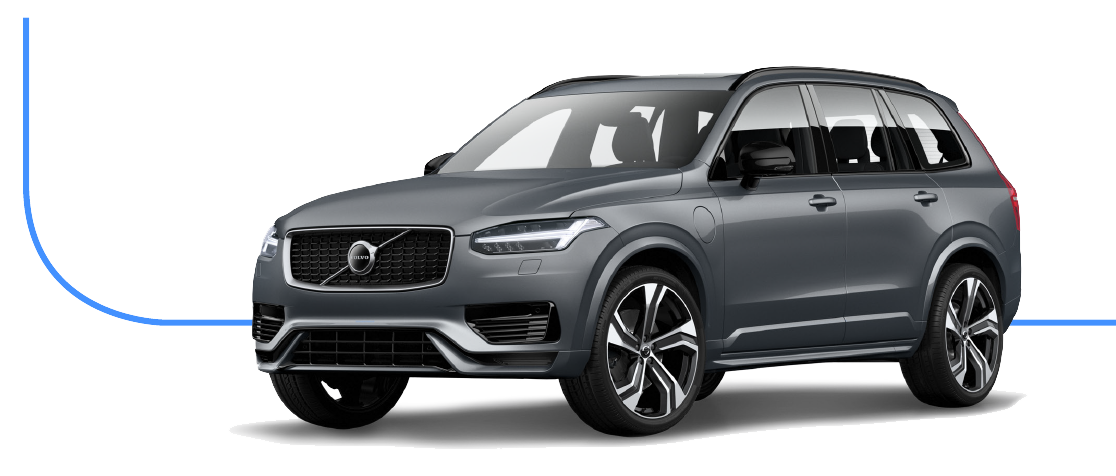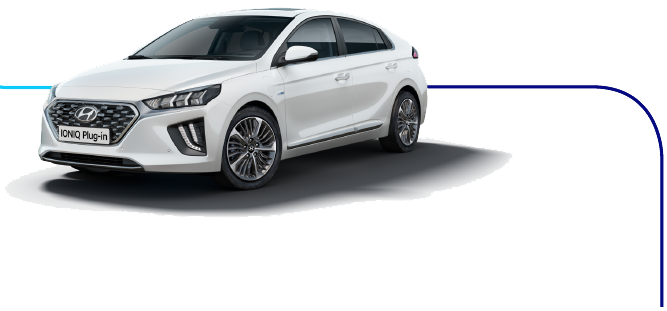Q&A - PHEVs
1. When are PHEVs appropriate? For which drivers?
The plug-in hybrid technology enables the vehicles to cover a distance from 30 to 50 kilometers on pure electric mode depending on the size of their battery. The PHEVs are then more appropriate for drivers who live in urban areas with short distances to cover (e.g office-based employees). Giving a PHEV to an employee who does high daily mileage on motorways can be very counterproductive due to the weight of the battery and the extra consumption it will generate.
Identifying the different types of driver profiles is a key element to determine if PHEVs make sense for your fleet. Some basic questions should be asked to the drivers:
-
Distance from home to the office
-
Average daily mileage for business purposes
-
Average yearly mileage for private purposes
-
Ability to charge at home/office?...
2. How can I make sure my drivers will charge as expected?
Ensuring that the PHEVs will be used in an optimum way is responsibility. European countries’regulations and taxations schemes are in favor of green vehicles and the electricity consumption is often not considered in the BIK calculation. So, the best way for the employer to ensure that the drivers will use the PHEVs as they should, especially for professional use, is to provide the right access to charging infrastructure (office chargers, public network, home chargers) and cover all the expenses related to electricity consumption.Capping fuel expenses can also be an alternative to encourage drivers to charge as often as they can.
3. How can I educate my drivers?
ALD Automotive can provide some training modules which come in addition to the quick training given by the OEM when the car is delivered. We also suggest ensuring that all drivers who want to order a PHEV sign some rules of engagement prior to the order. This document shall highlight what is expected in terms of usage and what should not be done while driving a PHEV. A strong reporting and monitoring of the fuel and energy consumption is also a key element as it enables the employer to adjust driver behavior during the contract life.
4. How can I select the right PHEV for my car policy? Should I apply the same criteria for all PHEVs irrespective of their size?
Before introducing PHEVs in the fleet, the first milestone is to understand the real usages of the vehicles and the driver’s readiness. PHEVs won’t fit all profiles and some models must be introduced in the car policy with lot of care as inappropriate usage could generate significant fleet cost increase. This is especially true with the large and heavy SUVs whose fuel consumption can easily exceed 11l/100km with an empty battery.
5. Is it worth the effort? Base price is high, I need infrastructure, change management, and at the end of the day my fuel consumption is 3 times more than announced!
PHEVs are indeed more expensive than their ICE alternatives, an ad-hoc charging infrastructure is needed, and the fuel consumption is on average 3 to 4 times higher than the theoretical one. But if we see this in a much more positive way, the new taxation schemes and incentives available in many European countries are helping to bridge the list price gap. Then the PHEVs being a transition product to BEV, investing in the infrastructure does make sense as it enables the company to shape the future of its fleet. Once again, the context is in favor of this transition as many financial incentives are available to support the installation of office or home chargers. And as the statistics show that 80% of charge is done at home or at the office, and due to the lack of transparency on the pricing of public charging, it is worth investing in in-house infrastructure to ensure the right reporting and cost optimization.
And finally, even if the PHEVs consume 3 times more than announced, don’t forget that they still consume less than their ICE counterparts.
6. What’s the benefit of PHEV vs a standard full hybrid (cost, CO2)?
A PHEV can cover significant distances (40-50 km) on full electric mode, even at quite high speeds (120-130 km/h) which a standard full hybrid will never be able to do. From an employer perspective, putting this technology in the hands of its drivers, after ensuring that those with the right profiles, can be a nice opportunity to reduce the fuel spends and CO2 emissions. Nevertheless, standard hybrids are also the right alternative for some usages and PHEV should not discredit the benefits of HEV.
7. I read everywhere that PHEVs are the new Dieselgate, why should I choose them?
Once again, it is a matter of usage. All the articles we can find in the press which highlight the dark side of PHEVs describe the typical use case of companies who chose the PHEV for the tax benefits it brings without considering the impact it can have if badly used.
This is the result of the recent adoption of this technology. All new technology has its own learning curve, and some time was needed before understanding the scenarios when a PHEV brings a real efficiency.
We are now dealing with a more complex environment as it’s not just a matter of diesel vs petrol anymore. So, keep in mind that PHEV are the right answer to some specific usages, as BEV, HEV, Petrol or even Diesel vehicles are as well.
8. What is the ideal mileage scenario?
It really depends on the profile of the drivers but let’s say that PHEVs won’t fit for drivers who are doing high daily mileages on high speed roads. PHEVs are fitted for urban or peri-urban usages. Ideally for people who are using their cars for commuting purposes or short trips with ability to charge while the vehicle is not used. Let’s say that PHEVs should not be given to drivers who travel more than 30.000 km per year. Beyond this annual mileage, it is also important to identify how those kilometers are accumulated, the best professional use case being short distances (<50km) with the ability to charge while the car is not used.

9. How can I estimate the real TCO of PHEVs if I implement them?
Our consultancy team can propose detailed TCO analysis on different powertrains and assess whether it makes sense to switch for one or another alternative powertrain. For PHEVs, it is important to identify the share of electric consumption in the energy mix. This share is linked to the mileage driven, obviously the more you drive, the more you will use the thermic engine. Therefore, we usually base our calculations on the following breakdown: On fuel consumption, we also recommend an uplift of 200% on the theoretical data.
| ANNUAL MILEAGE |
ELECTRICITY % |
PETROL % |
| 5000 |
70% |
30% |
| 10000 |
60% |
40% |
| 15000 |
50% |
50% |
| 20000 |
45% |
55% |
| 25000 |
40% |
60% |
| 30000 |
35% |
65% |
| 35000 |
30% |
70% |
| 40000 |
25% |
75% |
| 45000 |
20% |
80% |
| 50000 |
15% |
85% |
| 55000 |
10% |
90% |
| 60000 |
10% |
90% |
| 65000 |
10% |
90% |
| 70000 |
10% |
90% |
10. What are the key Dos & Don’ts for a successful PHEV implementation?
Dos:
- Assess driver’s readiness and profiles (survey)
- Ensure that drivers will have access to the right charging infrastructures
- Cover all electricity expenses of the drivers
- Cap fuel expenses to encourage the drivers to charge whenever they can
- Educate the drivers
- Regular reporting and monitoring on energy consumption
Don’ts:
- Consider the PHEVs as a unique way to save money on taxes
- Make PHEV eligible for all drivers
- Provide PHEVs without charging solutions
11. Can PHEVs be a helpful alternative for my fleet?
The answer is yes!
As mentioned above, in the right hands a PHEV can be much more efficient than an ICE and reassuring for drivers than a BEV, especially in this transition period.
PHEVs can help to save money on the taxation and energy consumption with a significant positive impact on the TCO at the end of the month. Don’t forget that in the meantime the TCO on ICE vehicles will increase due to the increase on cost production and lower residual values due to the introduction of diesel bans or low emission zones in big cities.
The main objective is then to find the right balance in the powertrain mix.
12. PHEVs are also available on LCVs.Is this a good option?
As far as we hear from the market and the manufacturers, PHEVs are not really considered as an alternative in this segment. In fact, the electric range being largely impacted by the payload, it is almost impossible to reach more than 20 km in full electric mode.
The manufacturers are investing a lot in BEV technology and future hydrogen solutions.
LCVs have different usages (quite extremes) than passenger cars, and PHEVs don’t really fit with those profiles. They have either heavy mileages (>500km per day) or at the opposite low urban mileages (<200km per day).
Common driver questions
13. Do I really need to charge the car and how often?
Yes! To be efficient a PHEV must be plugged in as often as possible. It is by maximizing
the kilometers driven on the electric engine that the PHEVs become efficient and environmentally friendly.
14. Do I need to drive differently?
Yes! To maximize the time spent on the electric engine and lower fuel consumption and CO2 emissions, then it is necessary to adopt a softer driving style.
This will also become quite natural with time as electric vehicles tend to change driving style and bring less aggressiveness and more anticipation.
Some behavior should also be avoided, like using the Battery Charging Mode, which uses the thermic engine to charge the battery. This mode consumes a lot of fuel and doesn’t bring any specific benefit to the driver, except in the case of high necessity such as when entering low emission zones.

15. What about the financial impacton my private usage?
Driving a low emission vehicle can bring many financial advantages, although this will depend on country specificities. This impact can be directly on the benefit in kind, but some advantages are also on parking fees and toll.
Maximizing journeys on electric mode is also a way for the driver to reduce private fuel consumption, especially when the employer covers all electricity related expenses.
16. What are the main benefits and drawbacks of a PHEV me?
If used correctly and considered as it should be, PHEVs can bring many benefits to the driver. It helps to lower fuel consumption, CO2 emissions and create a sustainable usage of a company car. The drawbacks can come if the car is not used properly or not plugged in. In this situation the driver will have to deal with higher fuel consumption, lower range and a more expensive vehicle.
Our take on PHEVs.
We believe the market balance between BEVs and PHEVs will remain relatively equal in the short term, but as BEV technology improves and infrastructure develops, we anticipate that BEVs will capture most of the growth and become dominant in the medium term (2025 onwards). Still, PHEVs have a role to play in the transition phase, if not beyond 2030, under the strict condition that their real-life performance improves.
ALD Automotive is always at your disposal to discuss the best operating lease options for the company's fleet!